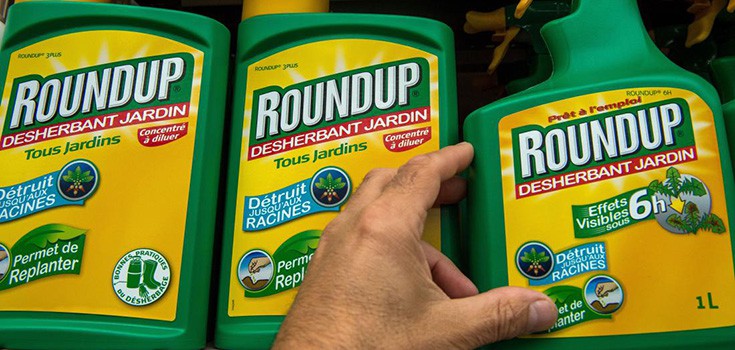It’s Official: California Lists Monsanto’s Glyphosate as a Carcinogen with Cancer Label

As of July 7, 2017, glyphosate, a chemical found in Monsanto’s RoundUp herbicide, has officially been listed as a carcinogen in California under the state’s Proposition 65 law.
Under the law, RoundUp, the most widely-used herbicide in the world, must carry a warning about its potential to cause cancer in humans. It is the first time that any governmental authority has created such legislation based on glyphosate’s possible carcinogenicity.
The California Office of Environmental Health Hazard Assessment (OEHHA) must still complete the task of setting a limit for acceptable daily exposure to the weedkiller. Agency scientists have proposed a limit of 1.1 mg a day, which is 127 times less than the U.S. Environmental Protection Agency’s (EPA) legal allowance for the average-sized adult.
Ken Cook, president of the Environmental Working Group (EWG) said:
“With this action today listing glyphosate as a cancer-causing chemical, California continues to lead the nation in implementing laws to protect human health and the environment. This is a significant blow to Monsanto, but a victory on behalf of the public, which could set the stage for similar actions in other states across the nation.”EWG says the law doesn’t go far enough, and believes the OEHHA should set a daily limit of 0.01 mg of glyphosate, which would protect all Californians, including the state’s most vulnerable population: children. The lower estimate is based on a recent analysis by EWG. Said Cook:
“While we applaud today’s action, we do believe the state can take additional steps to further protect its most vulnerable populations from this dangerous chemical.”Monsanto and other glyphosate manufacturers will have about a year from the listing date to add the warnings to their products or pull them from the market if it is unsuccessful in challenging the decision. Monsanto promises to fight the listing, required under state law Proposition 65, calling the decision “unwarranted on the basis of science and the law.” The seeds and chemical company unsuccessfully tried to block the listing in trial court and requests for stay were denied by a state appellate court and the state’s Supreme Court. Monsanto has appealed the trial court decision. Glyphosate, an odorless, colorless chemical, was introduced by Monsanto in 1974, and skyrocketed in popularity for its ability to kill weeds without harming other plants. It is sold in 160 countries, and it is applied to 250 types of crops in California alone. The fight to protect Californians from toxic substances like glyphosate is far from over, says Michael Baum, an attorney who represents more than 300 people who have filed suit against Monsanto, claiming glyphosate caused a loved one to get sick or die due to exposure to RoundUp.
A Little History
In March of 2015, the World Health Organization’s (WHO) International Agency for Cancer Research (IARC) declared glyphosate “probably carcinogenic” to humans. Monsanto called the decision “junk science.” Based on the IARC’s classification, California OEHHA decided to add glyphosate to a list of cancer-causing chemicals the agency maintains as required under the state’s Safe Drinking Water and Toxic Enforcement Act of 1986, or Proposition 65. Under the law, businesses must warn California residents about significant exposure to chemicals that can cause cancer, birth defects, or other reproductive harm. Monsanto reportedly attempted to keep glyphosate off the Proposition 65 list by getting a Reuters reporter to author a misleading article designed to undermine the IARC’s decision. However, it didn’t take long for the article to be debunked. Lawsuits have been filed on behalf of more than 1,000 people who allege that glyphosate caused them or a loved one to develop a potentially deadly cancer known as non-Hodgkin lymphoma. Nearly 200 of those lawsuits involve Californians. In addition, a now-retired EPA employee was discovered to have colluded with Monsanto to “kill” an unfavorable glyphosate study. The biotech giant also had ghostwriters author some of its research, but attributed the findings to academics. In March 2017, The New York Times wrote:“The court documents included Monsanto’s internal emails and email traffic between the company and federal regulators. The records suggested that Monsanto had ghostwritten research that was later attributed to academics and indicated that a senior official at the Environmental Protection Agency had worked to quash a review of Roundup’s main ingredient, glyphosate, that was to have been conducted by the United States Department of Health and Human Services.”Additional Sources: Environmental Working Group Organic Consumers Association CBS News San Francisco
